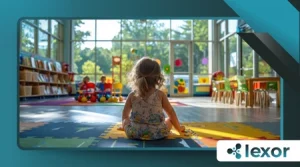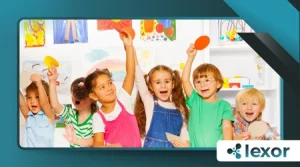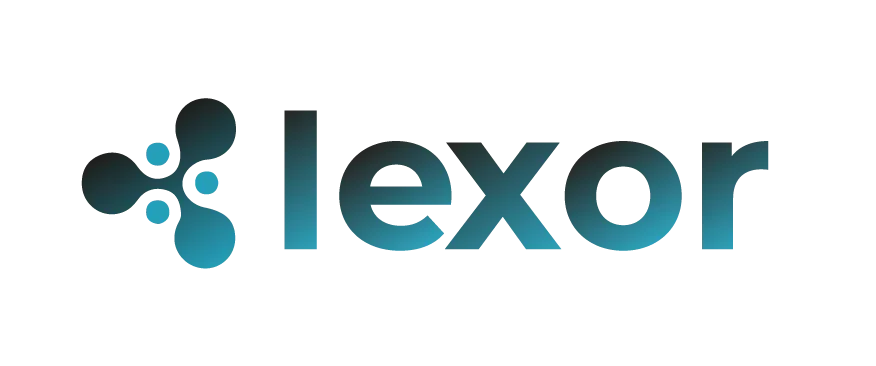Smart Classrooms in Kindergarten: What’s Changing?

The education landscape is evolving at an unprecedented pace, and smart classrooms in kindergarten are leading this revolution.
No longer confined to crayons and building blocks, today’s early learners interact with AI-driven lessons, immersive virtual environments, and adaptive learning platforms.
But this shift isn’t just about flashy gadgets—it’s about redefining how young minds explore, create, and understand the world.
What does this mean for teachers, parents, and, most importantly, the children themselves? Are we enhancing foundational skills, or are we risking overexposure to screens too soon?
The debate is complex, but one thing is clear: technology, when used intentionally, can unlock new dimensions in early childhood education.
A 2024 study by the National Association for the Education of Young Children (NAEYC) reveals that 68% of U.S.
kindergartens now incorporate some form of digital learning tools—a significant jump from 42% in 2020.
This rapid adoption signals a broader trend: educators are embracing innovation while striving to balance it with developmental needs.
In this deep dive, we’ll explore how smart classrooms in kindergarten are reshaping early education, the challenges they bring, and what the future holds.
The New Face of Early Education: Beyond Crayons and Flashcards
Kindergarten has traditionally been a space for social development, sensory play, and foundational literacy.
But the rise of smart classrooms in kindergarten is expanding these possibilities without erasing the essence of early learning.
For example, augmented reality (AR) apps now allow children to interact with 3D letters, watching them morph into animals when correctly traced.
This blends kinesthetic learning with digital feedback, reinforcing letter recognition in a way that static worksheets cannot.
Yet, the transition isn’t without friction. Some educators worry that excessive screen time could hinder fine motor skills typically developed through cutting, drawing, and building.
++VR in Aviation: Pilot Training and Flight Simulation
The key lies in integration—using technology as a tool, not a replacement.
Take Finland’s approach: their kindergartens use tablets for outdoor exploration, where children photograph plants and later classify them using AI-assisted apps.
This bridges digital and tactile learning, proving that tech can coexist with traditional play.
The question isn’t whether smart classrooms in kindergarten are beneficial, but how to implement them thoughtfully.
How Smart Tech Reshapes Learning: Three Key Innovations

1. Personalized Learning at Scale
AI-powered platforms like Age of Learning’s ABCmouse and DreamBox Learning adapt in real-time to a child’s progress.
If a student struggles with counting, the system offers additional visual aids or slows the pace. Conversely, if they excel, it introduces more complex challenges.
++ How to Use Educational Videos Effectively with Kids
This personalization prevents frustration—a critical factor in maintaining engagement.
A child who masters phonics early can move to storytelling exercises, while another receives extra practice without feeling left behind.
However, critics argue that over-reliance on algorithms might overlook socio-emotional cues. A teacher’s intuition—recognizing when a child is anxious or distracted—can’t yet be replicated by software.
2. Interactive Surfaces Replace Static Boards
Gone are the days of chalkboards and one-way lectures. Touchscreen smart boards, like SMART Technologies’ interactive displays, turn lessons into collaborative experiences.
Children drag virtual letters to form words, manipulate 3D geometric shapes, or even solve puzzles as a group. This interactivity not only reinforces concepts but also fosters teamwork—a skill just as vital as literacy.
Read more: The Role of Interactive Whiteboards in Preschool Classrooms
Still, the cost remains a barrier. While affluent schools embrace these tools, underfunded districts risk falling further behind.
3. Data-Driven Teacher Insights
Real-time analytics help educators identify learning gaps instantly. For instance, if several students repeatedly miss subtraction problems, the teacher receives a prompt to revisit the topic with alternative methods.
This shifts the role of educators from lecturers to facilitators. Instead of delivering one-size-fits-all lessons, they can tailor instruction based on hard data.
But privacy concerns linger. Who owns this data? How securely is it stored? Transparency from edtech companies is non-negotiable.
Balancing Screen Time and Sensory Play: Finding the Sweet Spot
The American Academy of Pediatrics (AAP) recommends no more than one hour of high-quality screen time for children aged 2–5. Yet, in smart classrooms in kindergarten, screens are often central.
The solution? Hybrid tools like Osmo’s Tangible Play, which merges physical blocks with digital feedback. Kids arrange wooden number pieces, and an app validates their math solutions.
This maintains tactile engagement while adding a layer of interactivity.
Another example is KIBO robotics, where children program wooden robots using physical coding blocks—no screens required. It teaches computational thinking without excessive screen exposure.
The challenge is ensuring technology supplements—not replaces—sandbox play, storytelling, and outdoor exploration.
Ethical Considerations: Privacy and Equity
Who owns the data generated by five-year-olds? As smart classrooms in kindergarten collect behavioral metrics, privacy becomes paramount. Parents deserve clear answers on how information is stored, used, and protected.
Additionally, the digital divide persists. Affluent schools adopt cutting-edge tools, while others rely on outdated resources. Policymakers must address this gap to prevent further inequity.
The Future: AI as a Co-Teacher?
By 2026, generative AI could craft custom storybooks featuring a child’s name and interests. Adaptive tutors might offer real-time language coaching. But can algorithms replicate a teacher’s warmth?
Technology should empower, not replace, human connection. The best smart classrooms in kindergarten will blend AI efficiency with empathetic teaching.
The Role of Parents in Smart Kindergarten Classrooms
As smart classrooms in kindergarten become more prevalent, parental involvement takes on new dimensions.
No longer limited to helping with homework or volunteering for field trips, today’s parents must navigate digital learning platforms, interpret AI-generated progress reports, and make informed decisions about screen time at home.
Some schools now offer “tech literacy nights” where families learn to use educational apps alongside their children, fostering continuity between classroom and home learning.
However, this also raises questions about digital equity—not all parents have the time, resources, or technological fluency to engage at this level.
The most successful implementations create multiple pathways for parental participation, from simple paper-based progress updates to comprehensive parent portals with multilingual support.
This inclusive approach ensures that technological advancement doesn’t inadvertently create new barriers to family engagement in education.
Conclusion: A Thoughtful Revolution
Smart classrooms in kindergarten aren’t a futuristic fantasy—they’re here. The goal isn’t flashy gadgets but meaningful, equitable learning.
As we navigate this shift, one question remains: How do we ensure innovation serves every child, not just the privileged few?
FAQs
Q: Are smart classrooms replacing teachers?
A: No. Technology aids instruction but can’t replicate human empathy and adaptability.
Q: How much screen time is too much?
A: The AAP recommends ≤1 hour/day of high-quality content for ages 2–5.
Q: What about privacy concerns?
A: Parents should review edtech privacy policies and opt for COPPA-compliant tools.
References:
